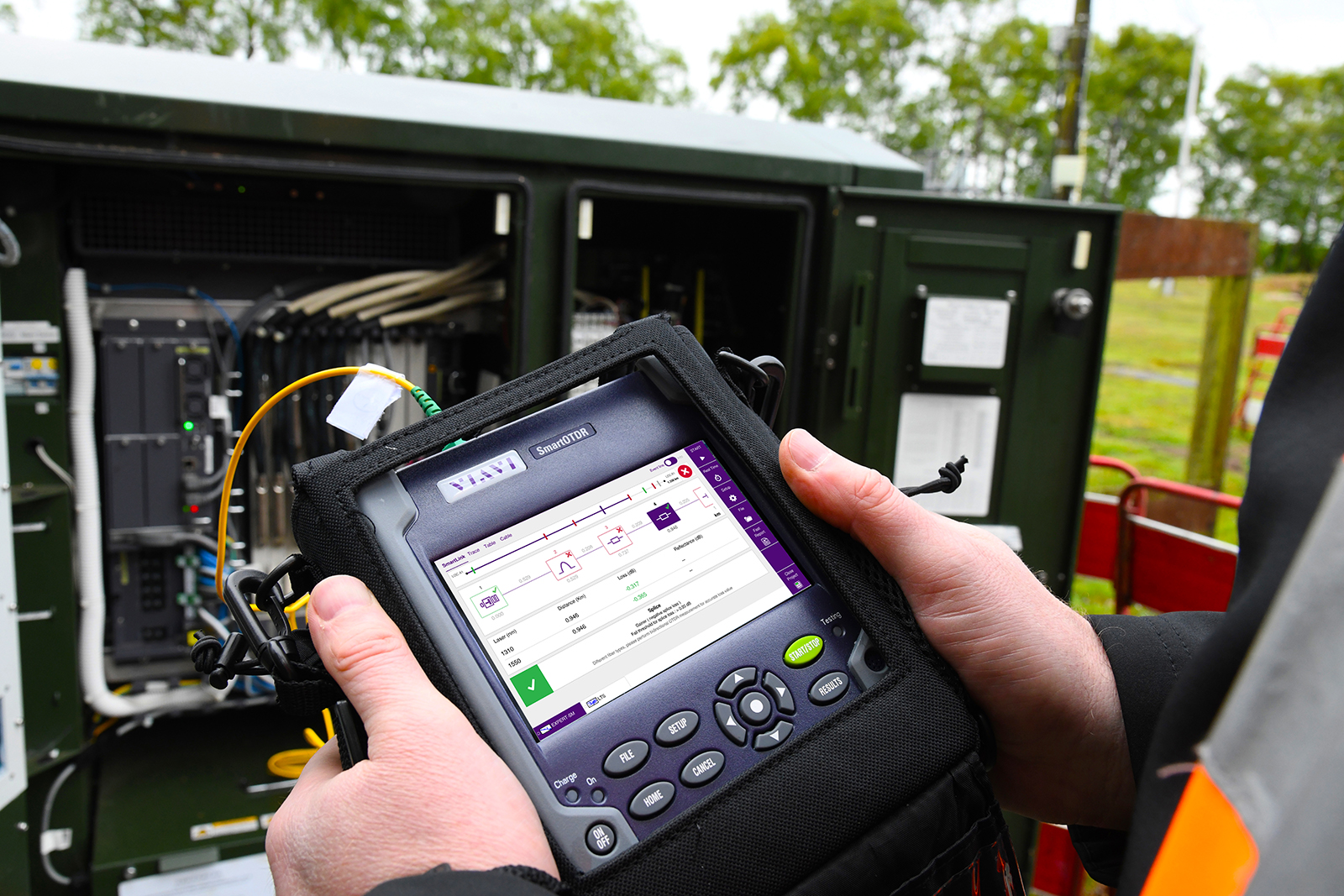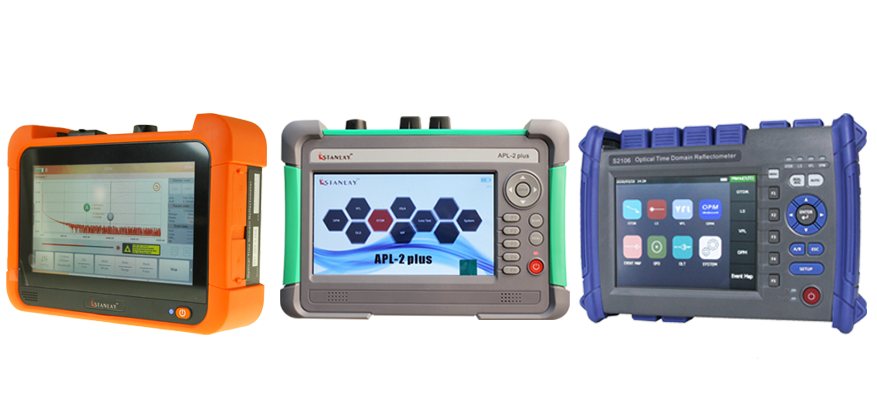Live analysis of fiber quality using optical fibre diameter analyzer
Checking Out Advanced Techniques in Fiber Measurement and Their Market Effect
In today's fabric sector, precise fiber measurement is vital for enhancing production processes and conference sustainability objectives. With the surge of innovative imaging and analytical devices, you can get deeper understandings into fiber framework and make-up. This change not just boosts performance but likewise lines up with market standards. As these sophisticated strategies evolve, you may ask yourself exactly how they can additionally transform producing practices and impact the future of fabrics.
The Significance of Accurate Fiber Measurement in Fabric Production

Ingenious Imaging Technologies for Fiber Analysis
When it pertains to fiber analysis, ingenious imaging innovations are video game changers. High-resolution microscopy methods and spectroscopic analysis approaches give you with thorough understandings right into fiber framework and composition. These improvements not only improve precision however likewise simplify your measurement processes.
High-Resolution Microscopy Techniques
High-resolution microscopy strategies have revolutionized fiber evaluation, allowing scientists to visualize fibers at unprecedented degrees of information. With techniques like scanning electron microscopy (SEM) and transmission electron microscopy (TEM), you can observe fiber morphology, surface functions, and cross-sections with amazing clearness. These methods allow you to compare various fiber types and evaluate their structural honesty. You'll discover that high-resolution imaging aids recognize flaws, incorporations, and other critical qualities that can affect material performance. Moreover, developments in digital imaging software application have actually enhanced photo processing, making it less complicated to examine and analyze information. By taking on these innovative methods, you can drive greater accuracy in fiber measurement and contribute to advancements in various markets, from textiles to compounds.
Spectroscopic Analysis Methods
Spectroscopic evaluation approaches have actually become powerful devices for fiber characterization, offering understandings that complement high-resolution microscopy. You can make use of strategies like infrared (IR) spectroscopy, which assists determine the chemical structure of fibers by measuring molecular vibrations. Raman spectroscopy offers an additional layer of detail, permitting you to evaluate molecular frameworks through spreading of monochromatic light. These methods not just enhance your understanding of fiber buildings however additionally make it possible for the detection of pollutants and architectural variants. By integrating spectroscopic techniques with conventional microscopy, you acquire an extra considerable sight of fibers' physical and chemical features, improving your research accuracy. Eventually, these technologies can notably affect product selection and top quality control in different markets.
Advanced Analytical Devices and Their Applications
As you discover the domain of fiber measurement, you'll discover that sophisticated analytical tools play an important function in improving accuracy and effectiveness. Methods like high-performance liquid chromatography (HPLC) and gas chromatography (GC) permit you to evaluate fiber structure with outstanding precision. These devices enable you to determine specific elements and impurities, ensuring high quality control in your products.Additionally, using scanning electron microscopy (SEM) offers you a thorough view of fiber framework, assisting you recognize exactly how different therapies impact efficiency. Modern software program additionally streamlines data evaluation, making it less complicated to translate intricate results and collaborate throughout teams.

Impact of Fiber Measurement on Manufacturing Performance
While precise fiber measurement may appear like a tiny information, it considerably affects production performance in the textile sector. When you invest in precise fiber dimension strategies, you can optimize raw product use and lessen waste. This causes much better source appropriation, allowing you to create premium textiles without overusing resources.By understanding fiber characteristics, you can customize manufacturing procedures to certain products, enhancing your process and minimizing downtime. For example, recognizing the specific tensile stamina of fibers lets you readjust machinery setups for maximum efficiency. This not only speeds up production yet also ensures consistent product quality.Moreover, precise fiber measurement assists you recognize problems early in the production line, protecting against pricey reworks and delays (optical fibre diameter analyzer). On the whole, carrying out innovative fiber dimension techniques streamlines procedures, improves performance, and inevitably increases earnings. In today's open market, every detail counts, and specific fiber dimension is a game-changer
Sustainability Factors To Consider in Fiber Evaluation Techniques
When you analyze fiber, it's necessary to ponder lasting practices that can decrease environmental impact. Using eco-friendly measurement approaches and minimizing waste in your assessments can significantly boost your general sustainability. Furthermore, integrating lifecycle evaluation into your methods can supply a more clear image of your fiber's ecological footprint.
Eco-Friendly Measurement Techniques
Taking into consideration the growing demand for sustainability in numerous sectors, adopting environmentally friendly measurement methods for fiber evaluation has become vital. You can start by utilizing non-toxic solvents and eco-friendly materials in your testing processes. These alternatives not only lower ecological effect but additionally boost safety for your team. Implementing digital dimension methods can even more minimize waste, as they usually call for fewer physical examples and resources. Additionally, leveraging innovative modern technologies like near-infrared spectroscopy can generate precise outcomes without harmful chemicals. By selecting these greener methods, you add to an extra lasting future while maintaining high requirements in fiber top quality. Ultimately, integrating eco-friendly practices into your fiber analysis not just straightens with consumer values however also improves your brand name's credibility.
Lowering Waste in Assessment
To effectively lower waste in fiber evaluation, you can execute approaches that enhance your testing processes and reduce resource consumption. Start by optimizing example dimensions; making use of smaller sized samples can yield precise outcomes while saving materials. Next, purchase multifunctional tools that permits various tests without requiring multiple devices, decreasing energy and resource usage. You should also think about adopting electronic devices for data collection and evaluation, which can lower paper waste and boost performance. Regularly educating your team on lasting methods assures everybody's aboard with waste reduction goals. Teaming up with providers that focus on sustainability can additionally enhance your initiatives, enabling you to examine fibers while maintaining a dedication to environmental duty.
Lifecycle Analysis Integration
Incorporating lifecycle analysis (LCA) into fiber analysis strategies can considerably boost sustainability efforts. By examining the ecological impacts of fibers from manufacturing to disposal, you can identify areas for renovation. This strategy assists you recognize resource consumption, energy use, and waste generation throughout the fiber's life.When you incorporate LCA, you're not just determining fiber features; you're additionally considering the environmental impact. This all natural view allows you to make informed decisions that prioritize sustainability. You may choose fibers that call for fewer sources or have a reduced carbon influence. Inevitably, LCA equips you to enhance procedures, decrease waste, and advertise ecologically pleasant options in fiber manufacturing, straightening your techniques with international sustainability objectives.
Market Specifications and Laws Forming Fiber Measurement
As the demand for high-quality fiber items expands, comprehending the industry standards and regulations that regulate fiber measurement ends up being important. These guidelines guarantee consistency, accuracy, and safety and security in the measurement procedure, which inevitably affects product quality. Organizations like ASTM International and ISO set forth requirements that manufacturers should stick to, covering different elements such as fiber recognition, stamina screening, and dampness content analysis.

Future Patterns in Fiber Measurement and Fabric Manufacturing
Exactly how will improvements in modern technology reshape fiber measurement company website and fabric manufacturing? You'll see a change toward automation and real-time information evaluation, enhancing precision and efficiency. Smart sensors will certainly keep an eye on fiber properties continually, permitting for instant changes in manufacturing. This indicates you can expect better fabrics with less waste.Moreover, AI and machine learning will certainly predict fads in customer choices, allowing suppliers to adapt rapidly. optical fibre diameter analyzer. By incorporating blockchain technology, you'll have better traceability of materials, ensuring sustainability and moral sourcing.Virtual fact and augmented fact will certainly contribute as well, providing immersive training experiences for employees on fiber handling and manufacturing processes.As you accept these modifications, the textile market will certainly transform right into an extra responsive, lasting, and innovative market, establishing new standards for high quality and efficiency. The future of fiber measurement and textile production is intense, and it's time to jump on board
Often Asked Inquiries
What Are the Most Typical Fiber Kind Measured in the Sector?
In the market, you'll often experience natural fibers like cotton and wool, in addition to artificial alternatives such as polyester and nylon. Each kind has distinct residential or commercial properties, affecting their measurement and application in various items.
Just How Do Fiber Measurements Impact Consumer Item Top Quality?
Fiber dimensions basics directly affect consumer item quality by making sure uniformity, sturdiness, and performance. When you understand these metrics, you can make enlightened choices, causing boosted complete satisfaction and much better total experiences with the items you use.
What Training Is Required for Fiber Measurement Technicians?
To end up being a fiber dimension specialist, you'll need specialized training in fabric scientific research, dimension methods, and equipment operation. Hands-on experience and accreditations can enhance your abilities, making you competent in precise fiber analysis and quality guarantee.
Exist Any Kind Of Qualifications for Fiber Measurement Professionals?
Yes, there are qualifications for fiber measurement specialists. You can go after alternatives like the Licensed Fiber Optics Professional (CFOT) or numerous industry-specific qualifications that improve your expertise and credibility in fiber measurement and screening.
Just How Can Small Companies Apply Fiber Measurement Techniques Properly?
You can execute fiber measurement techniques efficiently by spending in budget friendly devices, training your group, and establishing clear methods. Team up with market experts and constantly fine-tune your procedures to improve accuracy and effectiveness in Continued time.